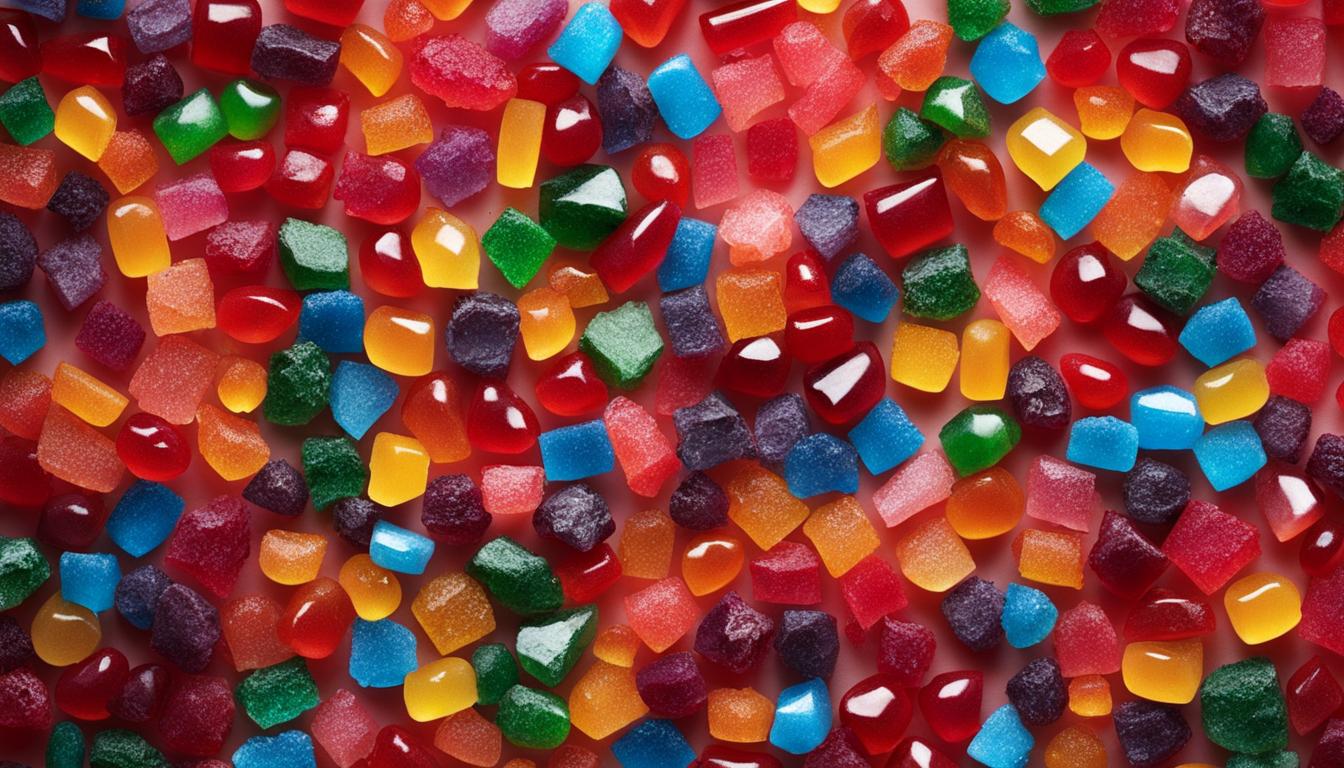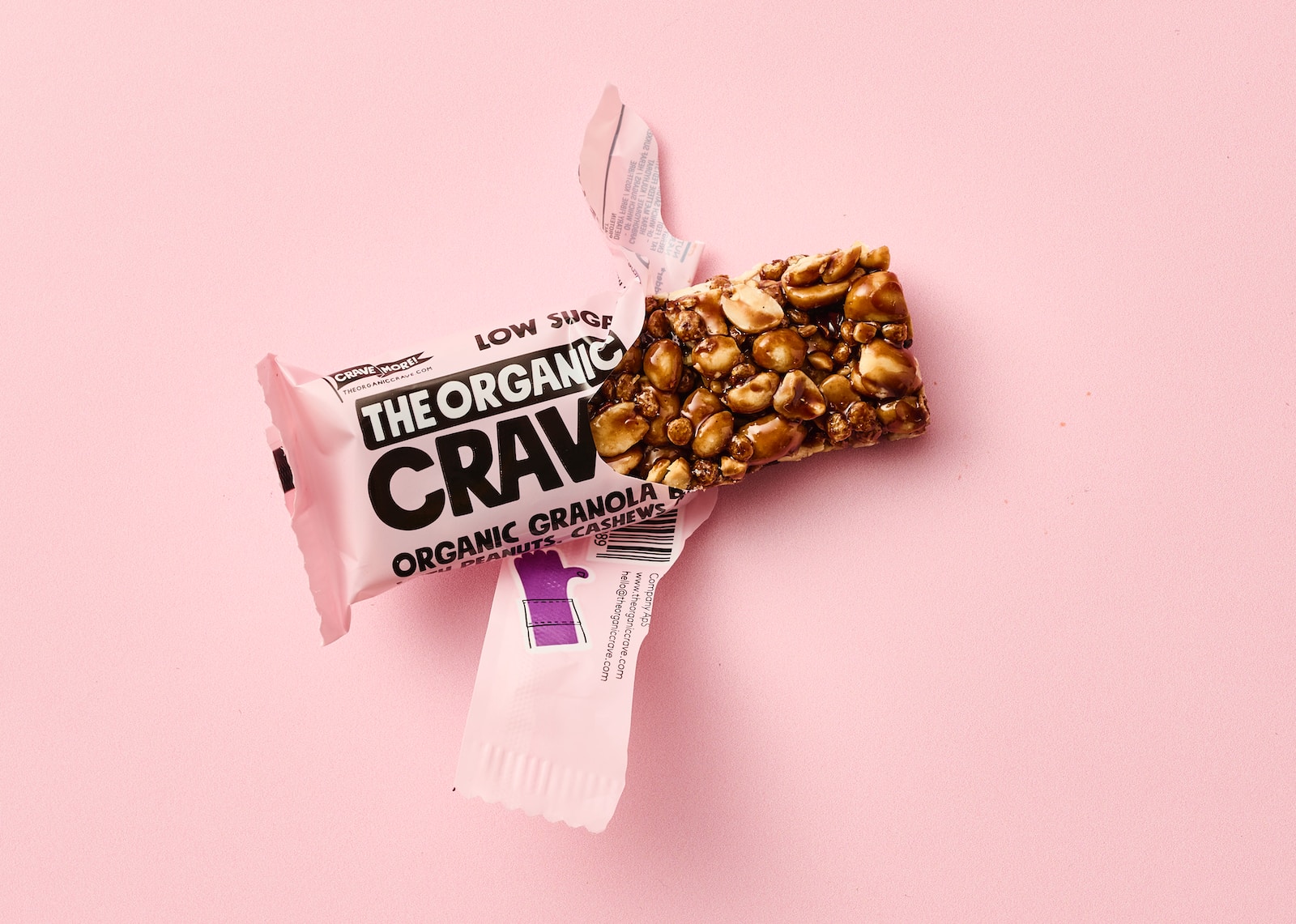The Great Chip Debate: Potato vs Tortilla
It is a question as old as time, or at least as old as snack food – which is superior, the potato chip or the tortilla chip? This seemingly innocuous query has sparked countless debates around picnic tables, barbecues and late-night snack sessions.
On one side of the argument are fervent fans of the thin and crispy potato chip, boasting its versatility and ability to hold up under a dollop of French onion dip. On the other side stand staunch supporters of the hearty tortilla chip with its robust crunch and ability to scoop up chunky salsa like a champ.
A Flavorful Journey Awaits
While it seems at first glance that this might be an insurmountable divide, we are here today to delve deeper into this crunchy conundrum. Our aim is not necessarily to crown one type of chip as superior but rather explore their unique qualities, origins and evolutions in an appetizing journey that would satisfy even the most voracious foodie’s curiosity.
Therefore, dear reader, prepare your mental palate for an exploration into two types of treats that have crisped their way into our hearts (and stomachs). By delving into their histories, exploring their production processes, tasting profiles & textures all while sprinkling in some delightful culinary twists along the way.
The Birth of the Chips: Origin Stories
When Fate Fried a Potato: The Saga of Potato Chips
Our delightful journey commences in the picturesque setting of Saratoga Springs, New York. The year was 1853. A particularly finicky customer at Moon’s Lake House incessantly criticized his fried potatoes for being too thick and soft.
Exasperated yet determined to satisfy this patron, George Crum, the esteemed chef, concocted a brilliant retaliation plan. Chopping a potato into incredibly thin slices then frying them to a crisp, he brought forth what he hoped would be an inedible monstrosity that would silence his critic.
Yet contrary to his expectations, the paper-thin potato slices were received with overwhelming delight. This accidental culinary marvel soon secured its place on menus far and wide under the name ‘Saratoga chips’, thus marking the birth of our beloved potato chips.
From Ancient Aztecs to Modern Munchies: The Legacy of Tortilla Chips
Crossing over from North America’s high rises and bustling streets, we venture into the sun-bathed landscapes of Mexico for our next tale of snackable invention—the tortilla chip. Unlike its potato counterpart born out of culinary rebellion, tortilla chips trace their roots back to resourcefulness and age-old tradition. The humble origins date back to ancient Aztec civilization where corn was treated with an alkali process known as nixtamalization before being ground into masa (dough).
Hand-pressed tortillas were made from this masa which were then cut and baked—quite similar to today’s homemade tortilla chips! However, our modern-day crispy companions owe their mass popularity to one ingenious woman named Rebecca Webb Carranza during late 1940s California.
As co-owner of Los Angeles’ El Zarape Tortilla Factory, Carranza couldn’t bear seeing misshapen tortillas go waste so she decided to cut them up and fry them instead—the rest is delicious history! Thus emerged another chip champion taking its position alongside the potato chip in our snack-loving hearts.
Unearthing the Core: Spuds vs Corn
As we delve into the anatomy of these beloved munchies, it becomes clear that potato chips and tortilla chips are as different as chalk and cheese – or rather, spuds and corn. Potato chips, unsurprisingly, start their life as humble potatoes. Russet potatoes are often the prime choice for their consistent starch content and reliable frying performance.
They’re harvested from the earth, cleaned thoroughly to remove any traces of soil, peeled (or unpeeled in some artisanal versions), sliced whisper-thin for that characteristic crispness, before being plunged into hot oil. Tortilla chips take a different route to deliciousness.
Their journey begins with maize or corn kernels – not fresh off the cob but rehydrated from dried kernels treated through a process called nixtamalization. This ancient practice involves soaking and cooking corn in an alkaline solution – usually lime water – which increases its nutritional value while giving it a distinctive flavor profile before they’re ground down into masa dough.
Spicing up Life: The Extra Crunch Factor
The magic isn’t only in their prime ingredients; it’s also about what else jumps into the mix. For potato chips, salt is indispensable – those tiny crystals not only enhance flavor but also draw out moisture during frying to deliver that lip-smacking crunchiness we all love so much. Some producers toss in a sprinkle of dextrose (a type of sugar) to achieve uniform golden browning during frying.
On the other hand, tortilla chip recipes often call for a pinch of salt too but may skip other additions entirely because nixtamalized corn has its own unique taste depth and crisp-making properties when fried or baked. But let us not forget flavored versions where manufacturers generously dust potato or tortilla chips with various powders – smoky barbecue sauce accents?
Tangy sour cream? Fiery chili pepper?
They’ve got you covered! In essence, whether your hand reaches for potato chips or tortilla chips largely depends on whether you’re hankering after earthy potatoes fried to golden perfection or hearty corn given that distinct Latin American twist.
Process Makes Perfect: How They’re Made
The Art of Crafting Potato Chips
The creation of potato chips, much like any culinary endeavor, is an art form that has been perfected over time. It all begins with unearthing the finest quality potatoes from the fertile soils. These earthy gems are then meticulously washed, peeled and sliced into wafer-thin discs.
The secret to their signature crunch lies in this precise thinness. Post slicing, these delicate slivers are rapidly immersed into a cauldron of bubbling oil, where they undertake a sizzling transformation.
The intense heat eradicates their water content and imbues them with a delectable crispiness that we’re all familiar with. Once they’ve attained the desired golden-brown hue and crunch factor, they are swiftly evacuated from their oily bath.
But it’s not over yet – these golden disks of mouth-watering deliciousness then take a salty shower before they’re ready for sampling; the seasoning process is what gives each brand its unique flavor identity. Some opt for just a simple dusting of sea salt while others venture into more adventurous territories like vinegar or barbecue flavors.
Tortilla Chips: A Crunchy Contrast
Moving onto our corn counterparts – tortilla chips! These crunchy triangles have an entirely different birth story. Their journey begins with whole corn kernels which are soaked in an alkaline solution—a process known as nixtamalization—that softens them up for grinding.
The resultant dough or ‘masa’ is then rolled out to an even thickness before being cut into classic triangular shapes (though some dare to deviate!). Unlike potato chips’ rapid-fire frying treatment, tortilla chips are initially baked before taking a brief dip in hot oil – this two-step cooking process results in their distinctive hearty texture and robust flavor profile.
Once cooled down post-frying, tortilla chips undergo their own version of seasoning; traditionalists stick with salt but one can also find lime-infused versions or spicier incarnations infused with jalapeno or chili powder. Despite being born from different processes and ingredients altogether, both potato and tortilla chips deliver on one key aspect—irresistible crunch!
Taste Test Time: Flavor Profiles & Textures
A Symphony of Sensations: The Potato Chip
To describe the classic taste and texture of potato chips is to craft an ode to simplicity. Every chip begins as an unsophisticated slice of potato but transforms into a culinary delight through the magic of heat and seasoning. The first bite offers a satisfying, almost musical crunch that reverberates like a tiny symphony in your mouth.
This characteristic snap heralds the arrival of the flavor—mostly salty, but layered with the earthy essence of potato that peeks through subtly, reminding you of its humble origins. The texture is thin, usually crisp and light yet sturdy enough to carry a dip if it so pleases.
There’s an understated complexity to its simplicity—how each paper-thin slice encapsulates just enough air for it not to feel heavy on your palate. On some occasions, you might find yourself relishing in the delicate wispiness of a ridged chip or exploring the intriguing labyrinth-like curls of kettle-cooked ones.
South-of-the-Border Star: The Tortilla Chip
While they share an affinity for crunch with their spud siblings, tortilla chips bring a whole new flavor game to the table. Made from corn dough—masa—their taste is distinctively grainier and nuttier than that of potato chips. This slightly sweet corn backbone tempers perfectly with salt sprinkled over their golden-brown surfaces.
The texture is thicker and more substantial compared to potato chips; they are built tough for dipping purposes after all. A tortilla chip’s jagged edges and robust constitution render them perfect vessels for chunky salsa or hearty guacamole without risk of crumbling midway—a true testament to their Mexican heritage where they often play essential roles in chilaquiles or nachos.
Dressing Up or Down: Popular Variations & Flavors
A Kaleidoscope of Tastes: Potato Chip Flavors and Variations
When it comes to potato chips, the flavor palette is as diverse as the international community that adores them. The classic salted potato chip, an unadulterated celebration of its primary ingredient, bewitches many with its simplicity. Yet, the journey into flavors is a thrilling roller coaster ride that leaves no taste bud untouched.
Sour cream and onion is an enchanting blend that resonates with those who desire a tangy burst complemented by the delicate hint of savory onion. For heat seekers, barbecue or spicy jalapeno offers a fiery experience that tingles and teases in equal measure.
Nonetheless, in an ever-expanding universe of flavors, some truly unique variations stand out. Wanderlust-inducing flavors like India’s Magic Masala or Thailand’s Sweet Chili Squid mirror their respective region’s culinary spirit.
And let us not forget about those seeking comfort in nostalgia – nothing says childhood like Ketchup flavored chips! Thus, potato chips are indeed a testament to mankind’s enduring creativity when it comes to satisfying the palate.
From Traditional to Trendy: Tortilla Chip Twists
Tortilla chips may have a humble origin but there’s nothing modest about their flavor versatility. The traditional tortilla chip is lightly salted – it’s crispness and subtle corn flavor making it an ideal canvas for dips and toppings alike.
However, like its potato cousin, tortilla chips too have embraced evolution. A fan favorite variation would be the nacho cheese tortilla chip – a savory delight that combines sharp cheese notes with just enough spice to keep things interesting.
Then there’s cool ranch – an embodiment of zestful herbs brilliantly balanced by creamy undertones; it creates sensation akin to embarking on a Western culinary adventure each time you reach into the bag. Moving beyond familiar territories though brings us face-to-face with unique contenders such as lime-chili tortilla chips – zesty lime paired with smoky chili gives your taste buds quite the Latin dance lesson!
In recent times we’ve also seen introduction of multi-grain versions for health-conscious snackers or sweet varieties like cinnamon-sugar dusted ones offering dessert-like indulgence. So whether you’re sticking true to tradition or venturing into unknown flavor territory – tortilla chips promise not disappoint!
Best Buddies: Classic Pairings & Dips
The Potato Chip’s Perfect Partners
In the gastronomic universe, potato chips are celebrated not only for their stand-alone merit but also for their penchant to pair impeccably with a plethora of dips and sides. The classic, thinly sliced spud disc adorned with just the right amount of salt is an absolute delight when married with the tangy creaminess of a traditional French onion dip.
The subtle sweetness of caramelized onions blended with sour cream gives this dip an enviable complexity that makes it a perennial pairing favorite. Beyond this classic duo, BBQ-flavored chips hold their own against robust dips like spicy chili or smoked gouda cheese sauce.
That’s not all – let’s not disregard those adventurous souls who dunk their kettle-cooked jalapeno chips into a hearty guacamole or dill pickle dip. It seems there’s no end to these culinary dalliances when it comes to potato chips.
Tortilla Chips: Traditional Partners in Crime
On the other hand, tortilla chips – cornmeal marvels toasted to perfection – have long been accustomed to being lords of the salsa dance and queens on nacho night. These golden triangles are synonymous with zesty salsa fresca, where the bright acidity from ripe tomatoes and lime tingles tastebuds, balanced by cilantro’s verdant freshness and fiery sparks from jalapenos. But why box these versatile gems into one flavor profile?
Their thick cut and hearty crunch make them ideal for plunging into molten queso fundido or loaded guacamole sprinkled liberally with crispy bacon bits or fresh pomegranate arils! And who could forget ‘chilaquiles,’ where tortilla chips are tossed in red or green salsa and garnished with a blend of cheese, crema fresca, onions, avocado slices?
Or perhaps ‘nachos’ – tortilla chips lavished with melted cheese (or two), jalapeños, olives, sour cream – and whatever your heart desires! With these delectable pairings on offer around every corner store shelf or Mexican cantina table spread; it’s obvious why tortilla chips remain as popular partners in delicious crime.
Nutritional Knockout? Comparing Health Factors
The Complex Crunch: Unpacking Potato Chips
When it comes to potato chips, their nutritional profile is a mixed bag of elements. A typical serving, which equates to roughly 15 chips or 28 grams, contains about 152 calories. It’s crucial to note that these are not just any calories, but ones densely packed with 10 grams of fat (1.5 grams being saturated), and usually high levels of sodium, hovering somewhere around the 170 milligrams mark.
The carbohydrates content is not for the faint of heart either – at about 15 grams per serving. However, the news is not all doom and gloom for potato chip lovers out there.
Despite a somewhat infamous reputation as an unhealthy snack option, potato chips also contain some nutrients such as Vitamin C and potassium due their primary ingredient – potatoes. But keep in mind; they are far from being a substitute for whole foods.
Maize Marvels: The Truth about Tortilla Chips
On the other flank of our crunchy rivalry stand tortilla chips – beloved staples in Mexican cuisine and throughout the globe as well. A standard serving (about six chips or an equivalent weight to potato chips) racks up around the same amount of calories – approximately 140.
Tortilla chips also pack in about seven grams of fat (one gram being saturated), somewhat less than their potato counterparts. Their sodium levels might surprise you though; they often meet or exceed those levels found in potato chips averaging around 120 milligrams per serving.
One prominent difference worth noting is that tortilla chips generally contain more fiber than potato ones – thanks in part to their corn base – resulting in slightly more substantial snack fare that can keep hunger at bay for longer periods. In terms of vitamins and minerals, tortilla chips offer iron and calcium thanks to fortification during production process although these additions may vary by brand.
At face value then, neither candidate pulls a clear win within our health-conscious comparison round – both have aspects that could be considered nutritional pitfalls if consumed excessively. But remember moderation is key when enjoying these tasty titans!
Cultural Impact & Popularity Contest: The Chip Champions
The Crispy Influence of Potato Chips on Popular Culture
Potato chips, typically associated with comfort food, have etched their influence far and wide across popular culture. From being the quintessential snack during Super Bowl parties to adorning the lunchboxes of millions of children worldwide, these crispy delights have become a symbol of leisurely indulgence.
They infiltrated television screens with commercials featuring catchy jingles and mascots like Mr. Pringles who became cultural icons in their own right. Moreover, potato chips inspired myriad culinary innovations such as chip-crusted fried chicken and chip-encrusted casseroles, leaving an indelible mark on the global gastronomy scene.
Contrasting Cultural Significance & The Popularity Parade of Tortilla Chip
In contrast, tortilla chips weave a different tale steeped in traditional Mexican heritage. Originally considered a way to use up leftover tortillas, these golden triangles soon found themselves center stage at gatherings – becoming synonymous with fun and fiesta.
Their cultural significance is highlighted during events like National Tortilla Chip Day celebrated every February 24th in the United States. The popularity contest is not far behind either; whether it’s a cozy family gathering or a bustling Super Bowl party, you will often find tortilla chips accompanied by salsa or guacamole — sealing their status as an iconic duo that transcends borders.
Conclusion: A Toast To Our Crunchy Companions
Whether it’s the universal appeal of potato chips or the traditional charm of tortilla chips, both have carved out their unique spots in our hearts and taste buds alike! In the end, it’s not so much about which one wins this crunchy contest but more about how they collectively enrich our gastronomic experiences in their own distinct ways. So here’s to celebrating diversity in crunchiness – may we always have a bag full of our favorite chips within arm’s reach to bring us joy and satisfy our snack cravings!
 Skip to main content
Skip to main content


